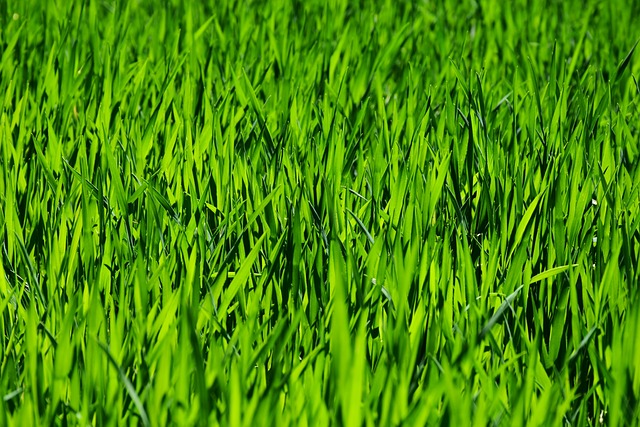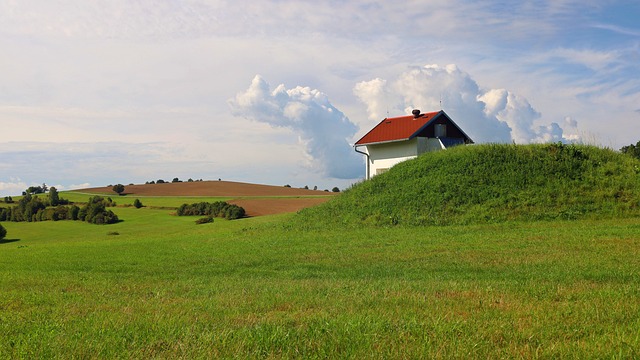Lawn Care and Landscaping involve a balanced approach to maintain lush grass. Key practices include regular mowing (no more than one-third of blade), strategic fertilization, efficient watering (1-2 inches per week), deep aeration, and suitable irrigation methods like drip irrigation or soaker hoses. Balanced lawn care encourages healthy growth, drought resistance, and enhances landscaping aesthetics, ultimately increasing property value.
Looking to transform your outdoor space into a vibrant oasis? This comprehensive guide on Lawn Care and Landscaping is your compass. We explore everything from lawn care basics – mastering mowing, fertilizing, and watering – to designing your dream landscape, whether formal, informal, or naturalistic. Learn how to choose plants and trees suited to your region and implementation and maintenance tips for turning visions into reality. Discover the secrets to year-round beauty and longevity with our expert advice.
- Lawn Care Basics: Nurturing Your Outdoor Space
- – Understanding the fundamentals of lawn health and maintenance
- – Techniques for mowing, fertilizing, and watering efficiently
Lawn Care Basics: Nurturing Your Outdoor Space

Maintaining a lush, well-kept lawn is a fundamental aspect of landscaping design. Lawn care involves more than just mowing; it’s an art that requires attention to detail and a basic understanding of grass maintenance. The first step in effective lawn care is establishing a regular mowing routine. Aim to cut no more than one-third of the grass height at a time, ensuring you never remove the top growth completely, as this can stress the plant. Adjust your mower deck according to the season; lower it in the spring and raise it during hot, dry periods.
Regular watering is another key component of lawn care. Lawns typically require around 1-2 inches of water per week, either from rainfall or irrigation. Watering deeply but less frequently encourages deep root growth, making your lawn more drought-resistant. Consider using drip irrigation or soaker hoses to minimize water waste and ensure the water reaches the roots efficiently. Fertilization is also essential for maintaining a healthy lawn; choose a slow-release fertilizer suitable for your grass type, applying it according to the manufacturer’s instructions. Regular aeration helps reduce soil compaction, allowing nutrients to reach the roots, and promoting better grass growth.
– Understanding the fundamentals of lawn health and maintenance

Maintaining a lush, healthy lawn is the cornerstone of any successful landscaping design. It’s not just about aesthetics; a well-cared-for lawn enhances the overall look and value of your outdoor space. The fundamentals of lawn health start with understanding soil composition, watering practices, and nutrient needs. Regularly testing your soil can reveal essential elements like pH levels and nutrient deficiencies, guiding you to make informed amendments. Consistent yet mindful watering is crucial; overwatering can lead to root rot, while underwatering causes browning and thin grass.
Implementing effective lawn care practices involves a balance of cutting, fertilizing, and pest management. Regular mowing promotes grass health by preventing excessive shading and encouraging new growth. Fertilization supplies the necessary nutrients for robust grass development, with timing playing a vital role to avoid environmental harm. Integrated Pest Management (IPM) offers a holistic approach to dealing with pests, focusing on prevention and utilizing eco-friendly solutions whenever possible. By combining these techniques, you create an environment where your lawn can thrive, serving as a stunning backdrop to your landscaping design.
– Techniques for mowing, fertilizing, and watering efficiently

Maintaining a lush and vibrant lawn is an art, and efficient mowing, fertilizing, and watering practices are the foundation of any successful landscaping design. Lawn care professionals often recommend regular mowing to keep grass healthy and encourage growth. The ideal frequency depends on factors like grass species and local climate, but consistently cutting no more than one-third of the grass blade will promote robust foliage. When it comes to landscaping, fertilizing is a game-changer. Applying the right amount of nutrient-rich fertilizer at the appropriate time can enhance soil fertility, leading to stronger roots and better overall plant health. Watering efficiently is equally crucial; timing matters! Morning watering minimizes evaporation and helps prevent fungal diseases, while deep but infrequent watering encourages root growth.
By implementing these techniques, homeowners and landscaping experts alike can achieve a thriving lawn that becomes the envy of the neighborhood, showcasing their outdoor space’s true potential.
Incorporating effective landscaping design and meticulous lawn care practices can transform your outdoor space into a vibrant and inviting environment. By understanding the basics of lawn health, such as proper mowing techniques, strategic fertilizing, and efficient watering, you lay the foundation for a lush and sustainable yard. These fundamental practices, coupled with creative design elements, enable you to cultivate not just a beautiful landscape but also a harmonious outdoor sanctuary that enhances your living space and contributes to environmental sustainability. Embrace the art of lawn care and landscaping to unlock the full potential of your outdoor oasis.
